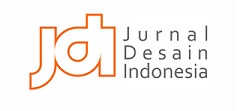ARCHIVISUALTECTURE: INVENTARISASI DAN PENGARSIPAN RANCANGAN GAMBAR LAYOUT TEMPAT IBADAT TRI DHARMA (TITD) DI BALI
Abstract
Tri Dharma temples in Bali are spread almost throughout the district to accommodate the religious, social, and cultural needs of the Chinese ethnic group and adherents of the Tri Dharma Religion. In traditional Chinese culture, the concept of cosmology and religion from residential, religious, to monument buildings has a long history. Some Tri Dharma temples in Bali have been around for more than 50 years and have historical value. However, since the beginning of the planning of the establishment/development, TITD in Bali has not had a proper building layout drawing document as an archive or architectural or interior data. Therefore, an effort is needed to inventory and archive the TITD layout drawing data in Bali. The solution to this data inventory and archive is to conduct observations, measurements, and interviews and make technical and graphic drawings by utilizing architectural and graphic softwares (AutoCAD dan Adobe Photoshop). Through this documentation and inventory of architectural drawings, TITD can provide benefits in preserving cultural heritage, recovery and restoration, design references, education and research, security and maintenance.
Keywords
Full Text:
PDF (Bahasa Indonesia)References
Armstrong, E, (2006). The importance of architectural archives. Art Documentation. Journal of the Art Libraries Society of North America, 25, 12-17.
Abdul, N., Arifin S., & Tallei V. (Oktober, 2017). Inventarisasi Ragam Pusaka Arsitektur Masa Lalu pada Kawasan Kota Tua Gorontalo. Temu Ilmiah Ikatan Peneliti Lingkungan Binaan Indonesia 6. Hal 25-36.
DOI: https://doi.org/10.32315/ti.6.i025
Barker, A., Niekerk K., Swart J. (2016).The importance of architectural archives. Architecture South Africa, 79, 6-9.
Datta, S., & Beynon, D. (2014). Digital Archetypes: Adaptations of Early Temple Architecture in South and Southeast Asia (1st ed.). London: Routledge.
Drobnjak, B. (2024). Digital Architectural Archives. AM. Journal of Art and Media Studies. 34, 1-10.
Hendrawan F, Beynon D. (2019). An Evaluation of the Implementation of Chinese Temple Layout Principles in Bali, Indonesia. Journal of the International Society for the Study of Vernacular Settlements. 6(4), 55-63.
Krihanta. (2012). “Arsip Kearsitekturan Sebagai Bukti Sejarah Peradaban Suatu Bangsa”. Dalam Majalah Arsip - Arsip dan Kearsitekturan Edisi 57, Januari- April 2012. Jakarta.
Lullulangi, M. (2015). Tipologi Arsitektur Tradisional Mamasa, Sulawesi Barat. Jurnal Arsitektur Langkau Betang, 2(1), 1-9.
DOI:https://doi.org/10.26418/lantang.v2i1.13835
Nilamsari, N. (2014). Memahami Studi Dokumen Dalam Penelitian Kualitatif. Wacana, 13(2), 177–181.
Palestini C., & Pellegrini L. (Maret, 2024). Architectural Archives: Graphic Legacies and Digital Divulgations. Congreso Internacional de Expresión Gráfica Arquitectónica. Hal 59-64.
Rukayah, R., Juwono S. (2021). Inventarisasi Arsitektur Bangunan Cagar Budaya Kantor Pos Semarang (Memikirkan Kembali Peluang Fungsi Kantor Pos di Era Digital). Jurnal Arsitektur Arcade, 5(3), 248-255.
DOI:https://doi.org/10.31848/arcade.v5i3.836
Salmon, C., & Sidharta, M. (2000). The Hainanese of Bali: A Little Known Community. Archipel, 60(4), 87-124.
Spallone, R. & Paluan, F. (2019). Digital Archives for Preserving and Communicating Architectural Drawings. In M. Khosrow-Pour, D.B.A. (Ed.), Advanced Methodologies and Technologies in Library Science, Information Management, and Scholarly Inquiry (pp. 461-475). IGI Global Scientific Publishing.
DOI: https://doi.org/10.4018/978-1-5225-7659-4.ch037
DOI: http://dx.doi.org/10.22441/narada.2024/v11.i3.010
Refbacks
- There are currently no refbacks.
Fakultas Desain dan Seni Kreatif
Universitas Mercu Buana
Gedung E Lantai 4
Jl. Raya Meruya Selatan no.1, Kembangan, Jakarta 11650
Tlp./Fax: +62215871335
Journal International Standard Serial Number (ISSN) Registration:
The Journal is indexed by:
Tools for Citations & Plagiarism Detection:

Ciptaan disebarluaskan di bawah Lisensi Creative Commons Atribusi-NonKomersial 4.0 Internasional
 NARADA: Jurnal Desain dan Seni
NARADA: Jurnal Desain dan Seni

























